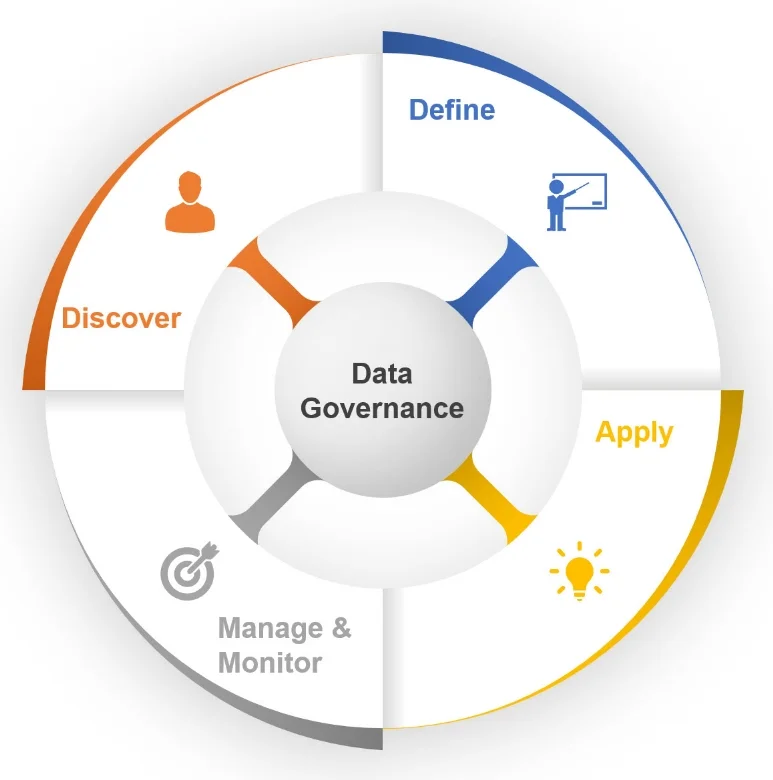Data Governance
Solutions
Data Governance with VTPMO
Data Governance basically provides the blueprint for business Data Analytics. Through Data Governance, organizations set rules to manage different types of business data. The goal of Data Governance is to ensure that all data are reliable and consistent before they can be used for performance evaluations or analytics or competitive insights. Data Governance is a centralized control mechanism to manage data availability, security, usability, and integrity. The functions performed by the data governance in an organization includes Setting data management parameters, the creation of processes to resolve data issues, and helping businesses in making decisions with high-quality data. Data governance affects the strategic, operational, and tactical levels of an organization. Hence, data governance must be performed in the continuous iteration, for effective organization and usage of data. The various benefits of data governance include increased enterprise revenue, reduced cost of data management, increased data value, and standardization of data systems.

There are four pillars to the data governance framework to enable organizations to get the most out of their data.
- Discover
- Data profiling to identify distinct use cases
- Perform enterprise and domain discovery
- Define (Quantify Value)
- Business glossary
- Reference tables
- Rules and rule builder
- Mapping specification
- Data classification
- Apply
- Mapping generation
- Standardization
- Validation
- Matching and consolidation
- Exception management
- Manage and Monitor
- Develop a scalable delivery model
We will work with you to support your data governance, master data management, metadata and data quality processes.
- Identify your data assets
- Establish a data stewardship process
- Understand the flow of data across your enterprise
- Establish data standardization rules
- Implement a master data management strategy
- Identify data security requirements
- Establish enterprise or organizational data models and data dictionaries
